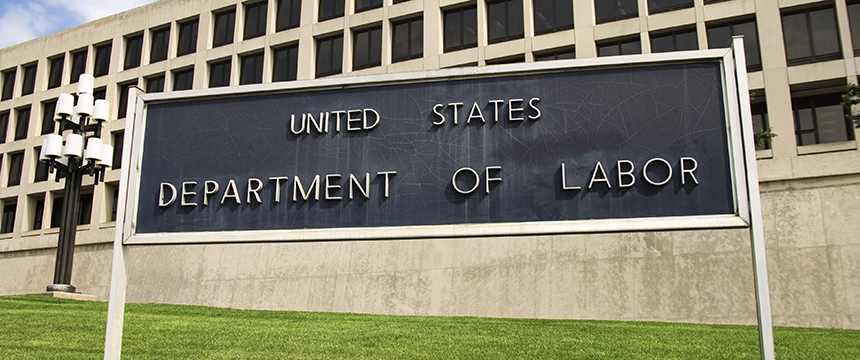DOL Provides Employers & Employees Additional Flexibility During Pandemic

On December 29, 2020, the U.S. Department of Labor (DOL), Wage and Hour Division, published a pair of guidance memos (specifically referred to as Field Assistance Bulletins) that give employers added flexibility to remain in compliance during the COVID-19 pandemic.
The first guidance memo (hereafter “Telemedicine Memo”) addresses the use of telemedicine visits to prove that an employee’s time off is covered under the Family and Medical Leave Act (FMLA). By way of review, the FMLA provides eligible employees with unpaid, job-protected leave for specified family and medical reasons, including when the employee or their family members suffer from a “serious health condition” as defined by the act. Per the FMLA regulations enacted in 2008, an in-person visit to a health care provider – i.e., an office visit – is one method for a worker to prove they or a family member suffers from a serious health condition. Telemedicine visits obviously are not office visits, so there was concern as to whether such visits could be used for FMLA purposes. This became especially germane during the COVID-19 pandemic as in-office visits with health care providers became less available and, in many cases, were replaced by telemedicine encounters.
The Telemedicine Memo makes it clear that a telemedicine visit qualifies as an in-person visit under FMLA guidelines if all three of the following conditions are met: 1) the visit includes an examination, evaluation, or treatment by a health care provider, 2) the visit is permitted and accepted by state licensing authorities, and 3) the visit generally should be performed by videoconference. The Telemedicine Memo also makes clear that simple telephone calls, letters, emails and text messages are insufficient communication methods, by themselves, to satisfy the requirement of an “in-person” visit.
The second guidance memo (hereafter “Notices Memo”) outlines conditions under which businesses can substitute electronic notices for hard-copy postings summarizing employee workplace rights. Again, by way of review, employers are obligated under several federal laws and regulations enforced by the DOL, such as the FMLA and the Fair Labor Standards Act, to “post and keep posted” notices at worksites, such as on a bulletin board in a break area, that describe employees’ rights regarding minimum wages, overtime pay, and leaves of absence, among other items. Accordingly, employers do not satisfy their notice obligations through a direct mailing or other single notice to employees.
The Notices Memo provides that “in most cases” a business will satisfy its posting requirement via an electronic notice, such as by email or on an intranet site, internet website, or shared network drive or file system posting, if (and only if): “(1) all of the employer’s employees exclusively work remotely, (2) all employees customarily receive information from the employer via electronic means, and (3) all employees have readily available access to the electronic posting at all times.” The Notices Memo also encouraged employers to supplement electronic notices with a hard-copy posting at the workplace when it has workers working both on-site and remotely. Lastly, employers also must ensure they’ve informed workers about how to access the electronic notices.
As the COVID-19 pandemic is an ever-evolving situation, employers should continue to regularly monitor federal guidance on operating during the pandemic. For more information or questions, please contact your relationship attorney or the author listed below. Foley is here to help our clients effectively address the short- and long-term impacts on their business interests, operations, and objectives. Foley provides insights and strategies across multiple industries and disciplines to provide timely perspective on the wide range of legal and business challenges that companies face conducting business while dealing with the impact of the coronavirus. Click here to stay up to date and ahead of the curve with our key publications addressing today’s challenges and tomorrow’s opportunities. To receive this content directly in your inbox, click here and submit the form.